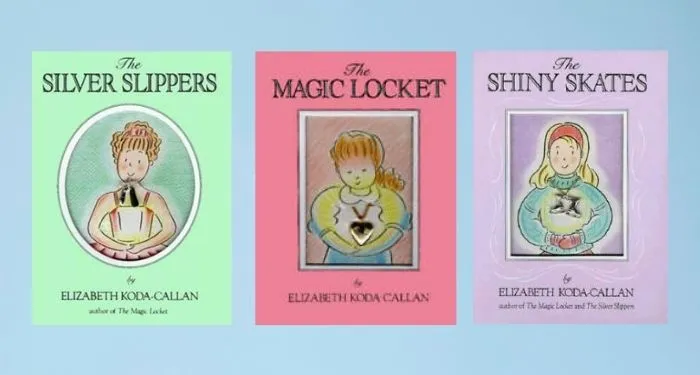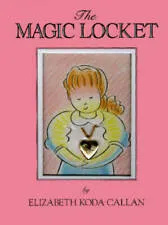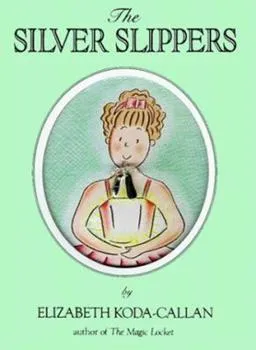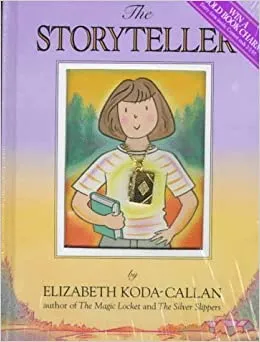
Remembering The Magic Charm
In 1988, Elizabeth Koda-Callan published a book that would go on to build a surprising legacy and a long-running series, enchanting those who grew up in the 1980s and early ’90s. The first book, featuring an unnamed little girl, was a story about the power of believing in yourself. The girl was clumsy and worried constantly about never being able to do anything right. Her great aunt, wanting to help the little girl understand the power of self-confidence, gifted her a magic locket that would serve as a reminder of all the magic she held inside her.
We never get to know the little girl as an individual — and that’s by design. She’s the every girl*, one who resonates with others in those awkward 2nd to 5th grade years, too young to be a tween but old enough to no longer think of themselves as a little kid. She struggles with self-confidence, and in later books, the every girl finds that self-confidence is among the keys to succeeding at whatever it is she pursues.
And pursue she does: the every girl is a ballerina, a horseback rider, a summer camp attendee learning about how she’s a great storyteller, an artist others sometimes don’t understand, a baker, the lead in her school’s Christmas pageant, a friend, and a new sister. In some stories, the every girl has to prove herself responsible, and when she does, she’s rewarded. That reward comes both in the tangible, as in the story where she convinces her mother she can handle adopting a cat, as well as the intangible: showing responsibility helps bolster one’s self-confidence. The same plays out in the every girl’s learning of determination, as she works to build her skills as a skater. The every girl wrestles with what she wants, too. As much as she longs for a little sister, upon receiving her wish, she finds herself experiencing envy.
But perhaps what’s most memorable about the book and subsequent titles in the series isn’t the story. It’s not the lessons imparted upon every girl.
It’s the magic charm.

Tucked in a cutout on each book’s cover was a charm necklace. In The Magic Locket, the first book in the series, it’s a small gold heart locket on a gold chain. The Silver Slippers, the second title in the series, included silver ballet shoes on a silver chain. Among the other charms on chains in the series were a cat, a book, an artist’s palette, an angel, a cookie cutter, and a pony. These necklaces mirrored those in the story and aimed to work in the same way: the every girl who wore the necklace would remember her own self-confidence and be bold in the pursuit of what mattered to her. In most cases, the charm in the story was gifted by a significant female figure in the girl’s life (in The Queen of Hearts, the every girl’s father gifts her a charm, as the story unfolds around his work with her on learning to bake cookies).
As the series progressed, not only did the charms remain, but also, pages in the book were introduced where readers could respond and reflect. The Artist’s Palette, published in 1998, gave space for readers to practice their own sketches, just like the girl in the book. In The Secret Diary, the every girl uses a diary to work through her feelings of envy toward her baby sister, and readers are encouraged to use the provided diary pages as a space to work through feelings they may be having, too.
The series introduced virtues to young girls and did so through gentle but relatable stories. They were further reinforced through the charms, as the every girl could wear them to remind her through her own life to practice confidence, determination, or responsibility.
Koda-Callan was a designer before her Magic Charm series. She worked at Glamour magazine, as well as Mademoiselle, prior to taking on a job with Scholastic in their design department. While at Scholastic, she designed and edited art, including several award-winning projects. It should come as little surprise that her work in design at Scholastic helped her understand the ways that a book tells a story not just on the page, but off the page, too.

The Magic Charm books sold tremendously well, with an estimated 4.2 million sold in 2004. That year, the series was redesigned and packaged with a smaller trim size and a lower price. The original hardcovers sold for about $13, while the newer, smaller editions retailed at $10. The revamped series still retained the charms.
“I do clearly remember the craziness over getting the charms just right — the back & forth with the samples, the worry (mine) that the pony’s tail or foot or the ice skates would gouge the little girls who’d insist on sleeping with the damn necklace,” recalls Elisabeth Scharlett, an editor who worked on Koda-Callan’s series with Workman. “[I also remember] obsessing over the colors of the covers, to make sure they were all different yet compatible and a pleasing pastel.”
Scharlett said she and Koda-Callan worked as a team, with Koda-Callan providing the story and art, and Scharlett helping make her visions come to life.
“She definitely knew how to tap into her readership. I worked with her on the text, and it was very hands-on for both of us, working together. I respected her confidence in her message and her wish to let the books give little girls reassurance above all,” said Scharlett. She recalls success and reception of the books being immediate.
According to a 1996 Publisher’s Weekly report on book sales, The Magic Charm was the 86th best selling children’s book of all time and The Silver Slipper #102. Both books remained in the top 120 on the same report in 2001. Several titles that were popular not only with established fans of the series, like The Storyteller, went on to be included as a children’s book-of-the-month selection.

Though the series was refreshed in the early 2000s, today all of the book’s titles are no longer in print. Many are available through third-party sellers on major retailer sites, as well as vintage and auction sites. It still shows abundant availability in public libraries across the USA. Koda-Callan published just one book post-series, The Squiggle-Wiggles, in 2003, under the name E. A. Koda-Callan.
The Magic Charm series was special not just for what it did at the time by offering the every girl a series of relatable stories that encouraged character development skills. That the series paired these books with a charm like those within the story re-instilled those skills for readers long after they finished each book.
It’s a series that, decades later, still emerges in the memory of readers who experienced these books as children. It may not be a Goosebumps or a Baby-Sitters Club with cultural relevance still today, nor is it a series that has seen a repackage and republishing since the early ’00s. But it’s one that endures in memory both for what it offered then as a literary experience but now, too, as one that connects what made the books stand out — their charms — with exactly what those charms hoped to evoke: memory and fondness for growing up and becoming who you are today.
*The every girl in these stories is, of course, white, and there is privilege inherent in that.










